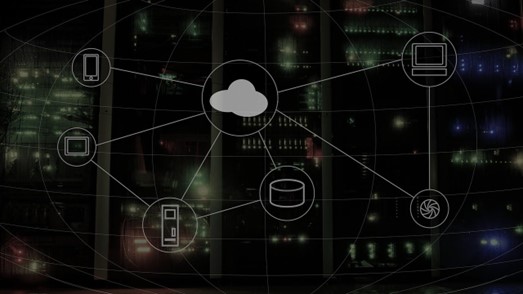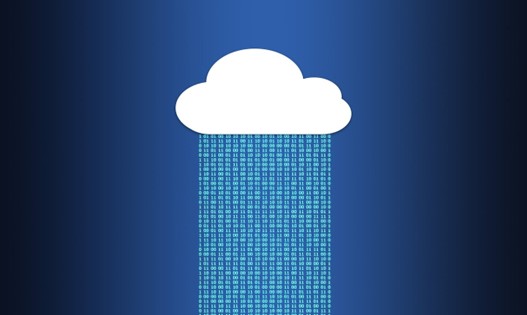Invoicing remains a key concern for businesses in 2025. The slightest error in data entry can lead to payment delays and collection difficulties, and ultimately undermine a company's financial health.
Against this backdrop, the introduction of a cloud-based billing process makes perfect sense. Especially as in 2024, 89% of companies had already adopted a multi-cloud approach, with an average of 2.2 services per company.
What is cloud billing?
Cloud invoicing is a set of online services that enable you to create, send and manage dematerialised invoices. In practical terms, instead of hosting your invoicing system on an internal server or producing paper invoices, you access a platform accessible via the Internet.
This approach differs from traditional invoicing in its ability to adapt to the day-to-day fluctuations of your business: you usually pay a monthly or annual subscription, which includes maintenance and updates. So you no longer need to invest in servers or manage software patches yourself.
What's more, cloud billing is part of a regulatory context that is moving towards total dematerialisation of financial documents. As a result, from 1 September 2026, all French businesses subject to VAT will have to switch to the electronic invoicingotherwise known as dematerialised billing.
Cloud software therefore represents a response to these new legal requirements, securing your transactions and simplifying the process of ensuring that your invoicing complies with the regulatory framework.
Optimise your invoicing process with the cloud
Transforming an invoicing system is more than just transferring invoices to an online platform. Above all, it's an opportunity to rethink and optimise your entire invoicing process within the company.
With cloud billing, you can create reusable invoice templates and automate the sending of documents to your customers. Some tools also allow you to automate reminders for unpaid or late invoices. Result: you save time and considerably reduce the risk of input errors (differences in amounts, VAT errors or omissions of certain tariff lines).
Invoicing solutions also make it possible to centralise all information customer data, payment history, pricing conditions, etc. This centralisation makes it much easier to consult, update and share information between the different teams (sales, finance and administration).

Cloud billing also allows you to keep track of real-time access to information Invoicing: users can access invoicing documents simultaneously. For example, the accounting department can validate an invoice while the sales rep makes a change to it, without having to exchange multiple e-mails.
Another advantage? From dashboards are accessible in real time. They allow you to see the status of invoices (paid, pending, overdue, etc.) and quickly identify the files that need to be dealt with as a priority.
What's also interesting about the cloud is that it's ability to integrate with other applications or management toolsCRM, ERP, online payment solutions, e-commerce platforms, etc. Most of the time, these tools are designed to connect with your various services
This means you can automate the customer journey even further. For example, as soon as a sale is concluded, the invoice can be generated and sent automatically from the information contained in your CRM.
Improve the security of cloud billing
Organisations that decide to move to cloud invoicing must ensure that they put in place as many measures as possible in order to guarantee the security of their data. A lot of billing information (amounts, bank details, customer data) is sensitive and must be protected from unauthorised access or computer attacks.
Professional software that is recognised on the market uses security protocols that store your data encrypted, making it impossible for anyone not authorised to read them.
For your part, set up a rigorous management of access rights to limit the risks: create different roles and user profiles and be careful who you give access to sensitive information. You can also strengthen authentication by implementing two-step validation.
Finally, don't forget that the most common risk is often the human factor. That's why you should regularly train your teams and remind them of general good safety practice.
With these concrete actions, you can effectively secure your invoicing process in the cloud.
Choosing the right cloud billing solution
Before switching your billing to the cloud, there are a number of criteria to consider, including functionality, ease of use and data security, as well as the supplier's ability to support your business over the long term.
Key features to look for
To start with, you can list the features you really need. A quotation and invoicing software generally offers a host of tools that include not only the creation of quotes and invoices, but also management functions such as payment tracking, automatic reminders, a profitability analysis tool, etc.
From software publishers like Sage offer comprehensive solutions that cover all these needs, while remaining accessible to teams with varied IT skills.

You should also check the compatibility of the solution with your other business applications (CRM, ERP, online payment, etc.). Good integration means that you don't have to re-enter different pieces of information and limits the errors associated with data exchanges.
Another point not to be overlooked is regulatory compliance. In order to making a success of your cloud transformationAs a minimum, your invoicing tool must comply with standards for electronic signatures, archiving and data protection. You should also make sure that the solution you choose takes account of forthcoming legal developmentsIn France, for example, electronic invoicing will be compulsory from 1 September 2026.

Customisation and upgradability
Every company has its own organisation and its own way of invoicing. This is one of the reasons why a cloud invoicing system needs to be able to offer a high level of customisation.
The ability to create bespoke templates, adapt input fields and set workflows means that you can avoid 'off-the-shelf' processes that don't always meet your expectations and day-to-day needs.
Also, if your business is set to grow - and that's all the bad news we can wish for you - growth will mean an increase in the volume of invoices, incoming and outgoing flows, an extension of your product catalogue or a change in your pricing structures.
In this context, your solution must be able to evolve at the same pace as your business. It's important to find out about the capacity of the various cloud-based billing solutions to find out whether they can handle a greater number of operations without slowing down, or whether they offer new functions that can be integrated as and when required.
You need to bear in mind that the aim is to invest in a tool that can support the development of your business over the medium and long term, without requiring too frequent or too costly migrations.
In conclusion
La billing with a cloud solution allows thoroughly modernise your financial management. In particular, you'll be able to reduce the risk of errors and enhance the security of sensitive data, while meeting the new legal requirements on dematerialised invoicing due to come into force in 2026.
To take full advantage of this, the choice of solution must be based on precise criteria: choosing the right software features, integration capabilities, customisation options and scalability. This way, you'll have a tailor-made tool capable of meeting your day-to-day needs.
With a investment in cloud billingNot only will you simplify the day-to-day work of your teams, but you'll also be able to free up time for them to devote to higher value-added tasks such as financial analysis.
And since we're talking about optimising your processes, once you've implemented cloud invoicing, the next step could be to explore other ways of digitising your processes. The dematerialisation of contracts or theautomation of business tasks are all interesting ways of boosting your competitiveness in the digital age.
